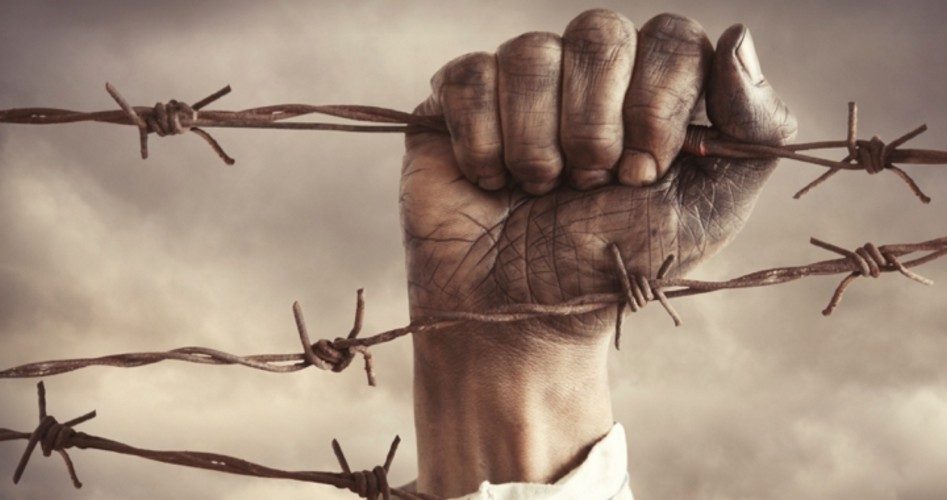
More than six decades after the end of the Korean War in 1953, the remains of 55 Americans came home from North Korea in what the New York Times called the “first visible result” of President Donald Trump’s effort to bring the fallen heroes home.
The remains rested in small coffins, draped with the United Nations flag under which the men fought, and were sent first to South Korea. Once in Hawaii, their destination, government forensics experts will try to identify them before burial.
President Trump tweeted his thanks to the corpulent communist dictator of North Korea, Kim Jong-Un, also known as “Little Rocket Man”:
The Remains of American Servicemen will soon be leaving North Korea and heading to the United States! After so many years, this will be a great moment for so many families. Thank you to Kim Jong Un.
The Men Still Unaccounted For
One hopes these 55 are just the first of many who will finally come home to rest, perhaps in the nation’s necropolis for heroes in Arlington. North Korean and American officials have been collecting remains for some time.
One question is whether any of these men died in captivity long after the war ended, and yet another is still unresolved: Where are the POWs shipped to the Soviet Union from the Korean theater, as American researchers and writers, including this one, have alleged in articles and books based upon U.S. government documents.
One recent report in that regard was published in The Washington Free Beacon just two weeks after Trump was elected in 2016.
The Free Beacon reported that U.S. officials had denied to Soviet officials having any evidence that the Soviets took Americans during the Korean War:
Pentagon officials leading efforts to recover missing American service members told their Russian counterparts in May there is no evidence that U.S. prisoners of the Korean War were brought into the Soviet Union, dismissing intelligence reports and eyewitness testimony compiled over the last two decades.
American officials made the claim during a May meeting of the U.S.-Russia Joint Commission on POW/MIAs, and experts say it could undermine the Defense Department’s efforts to recover further information about the more than 7,800 military personnel still unaccounted for from the Korean War of the 1950s.
Michael Linnington, who until recently directed the Defense POW/MIA Accounting Agency, or DPAA, told Russian officials participating in the forum that the Pentagon has “no evidence” that missing troops ended up in the Soviet Union by way of China.
Linnington’s comments angered experts who say the move will signal to the Russians that the U.S. government is no longer interested in pursuing a lead that it has chased for decades.
Another official said families are susceptible to “survivor myth” as a “coping mechanism” to handle the emotional and psychological difficulties of having lost a loved one who never returned.
The problem with that claim, as the Free Beacon reported, is that it contradicts hard evidence to the contrary. In other words, the evidence refutes the claim that the government has no evidence.
Three Reports
Three reports detail the evidence that Americans landed in the Soviet Union.
A report in 1993, “The Transfer of Korean War POWs To The Soviet Union,” concluded that “U.S. Korean War POWs were transferred to the Soviet Union and never repatriated.”
This transfer was a highly-secret MGB program approved by the inner circle of the Stalinist dictatorship.
The rationale for taking selected prisoners to the USSR was:
• To exploit and counter U.S. aircraft technologies;
• to use them for general intelligence purposes;
• It is possible that Stalin, given his positive experience with Axis POWs, viewed U.S. POWs as potentially lucrative hostages.
The range of eyewitness testimony as to the presence of U.S. Korean War POWs in the GULAG is so broad and convincing that we cannot dismiss it.
Another report was “1992-1996 Findings Of The Korean War Working Group,” published by the U.S.-Russia Joint Commission on POWs/MIAs. It concluded likewise and included the testimony of Soviet officers who knew about the prisoners.
One said Soviet officials on the ground in Korea had “standing orders to send captured pilots to the Soviet Union”; another stated that he interrogated Americans in Khabarovsk; and a third — a general, no less — said 30 to 40 POWs were packed off to the Soviet Union.
The Rand Corporation’s Paul Cole concluded likewise.
More proof came from the story of Marine corporal who was mistaken for an Air Force pilot and interrogated at Soviet military post in China.
Photo: narvikk/E+/Getty Images



